List of Authors
>>About this blog
Recent blog post
|
[Sam]
Nov. 29, 2014 09:00
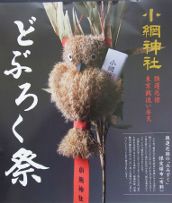 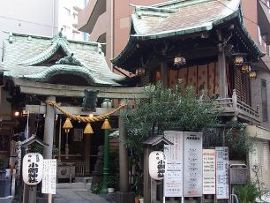
 On November 28th, Koami Shrine "Doburoku Festival". On November 28th, Koami Shrine "Doburoku Festival".
It is believed that the Nigori sake "Doburoku" of offering was served to worshipers at "Niiname-no-Matsuri" to appreciate the rich harvest of five grains.
Niiname-no-Matsuri usually takes place on November 23, but it is said that the area is usually held on November 28 (29 for Sunday and 27 for Saturday) due to fewer holiday populations.
On the day of the event, a limited bottle of sake "Good luck", which is based on the benefit of this shrine, and "Mimizuku", which is a good luck eradication, will be distributed, so this day is also a long line early in the morning.
"Mimizuku" is based on "Susuki", a representative of the seven herbs in autumn, based on the Doburoku Festival in November, and the benefits of exorcism and business prosperity are the "mi" of their own "mi" (body) and their family. ) Is awarded because it is "Tsuku".
Doburoku is served by worshipers from 9:00 am to evening.
(Three types of paper cups of large, medium, small and medium, and different capacity are available.)
After the festival from 12:00, the nationally designated Intangible Folk Cultural Property "Sato Kagura Dance" is dedicated to Jinmae.
Koami Shrine was enshrined in the first year of Bunsei (1466) and is said to reach 550 years in 2016.
To celebrate this honorable celebration, the precincts have been maintained one after another since last year.
In 2013, amulet reception counter was relocated, and Zenrai no Ii was relocated.
I hear that there is a plan to replace the roof of shrine hall and Kagura Hall.
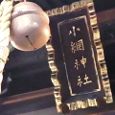 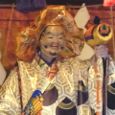 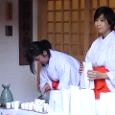 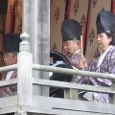
[Yotaro]
Nov. 28, 2014 14:00
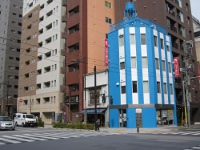 For a person to live his life as a poet For a person to live his life as a poet
You are intelligent and purely
I had to live purely
See you again
I have to die early!
(Tatsuji Miyoshi, "Breath of Life Spring")
Michizo Tachihara (1914-1939), who was born in Nihonbashi, lamented by Tatsuji Miyoshi, a fellow of the doujinshi "Shiki", lamented his death. This year marks the 100th anniversary of his birth and the 75th anniversary of his death.
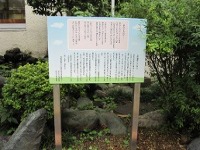 Michizo Tachihara was born in July 1914 at 3-1, Tachibanacho, Nihonbashi-ku (currently around 3-9-2, Higashi Nihonbashi, Chuo-ku). The ancestor of the mother are the famous Confucian scholar Tatehara Midoriken, and his child and painter Kyosho Tachihara. The birthplace's family business was the manufacture of wooden boxes for packing, which was quite extensively operated in the center of the wholesale district in Nihonbashi. He grew up in the downtown culture and went to Yotoku Kindergarten and Hisamatsu Elementary School in Hamacho, and was said to be the Shundo since the school opened at Hisamatsu Elementary School, and passed the chief for six years. After that, as with Ryunosuke Akutagawa and Tatsuo Hori, he went to Minaka, Ichitaka, and Teidai, but at university he studied architecture instead of the Faculty of Letters, demonstrated his talent here, and was given to the best student "Tatsuno (Kingo) Award" Has been awarded three times. After graduating, I joined the architectural office of a renowned architect Kikuji Ishimoto on the shore of Sukiyabashi and designed several buildings. Michizo Tachihara was born in July 1914 at 3-1, Tachibanacho, Nihonbashi-ku (currently around 3-9-2, Higashi Nihonbashi, Chuo-ku). The ancestor of the mother are the famous Confucian scholar Tatehara Midoriken, and his child and painter Kyosho Tachihara. The birthplace's family business was the manufacture of wooden boxes for packing, which was quite extensively operated in the center of the wholesale district in Nihonbashi. He grew up in the downtown culture and went to Yotoku Kindergarten and Hisamatsu Elementary School in Hamacho, and was said to be the Shundo since the school opened at Hisamatsu Elementary School, and passed the chief for six years. After that, as with Ryunosuke Akutagawa and Tatsuo Hori, he went to Minaka, Ichitaka, and Teidai, but at university he studied architecture instead of the Faculty of Letters, demonstrated his talent here, and was given to the best student "Tatsuno (Kingo) Award" Has been awarded three times. After graduating, I joined the architectural office of a renowned architect Kikuji Ishimoto on the shore of Sukiyabashi and designed several buildings.
In the field of poetry writing, he visited Setagaya Wakabayashi's home in Kitahara Hakushu during his junior high school days and continued to write poetry with interest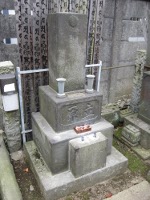 from an early age. In the year he joined Ishimoto Architectural Office (1937), he continued to publish a collection of poems "Stop in Kayakusa" and "Poetry of Akatsuki and Evening". In March 1939, the month before ending a short life due to a sudden change in tuberculosis, Was selected as the first winner of the Chuya Nakahara Prize. His poems are described as delicate, pure and musical lyric in the form of 14 lines. Tatsuji Miyoshi says, "Slightly light music that can speak in our language, as much as we can sing." There is a feeling that it is an excellent lyric poem built with a design drawing called Sonnet and an architectural material called Japanese. His poems are often said to be musical, but it seems that there is a word "architecture is frozen music", so I wonder if it's too bad. It seems to be a lyric poem by science brains, like abstract paintings that are often used in Japanese lyric poems, such as sentimental and glamorous things and private novels. from an early age. In the year he joined Ishimoto Architectural Office (1937), he continued to publish a collection of poems "Stop in Kayakusa" and "Poetry of Akatsuki and Evening". In March 1939, the month before ending a short life due to a sudden change in tuberculosis, Was selected as the first winner of the Chuya Nakahara Prize. His poems are described as delicate, pure and musical lyric in the form of 14 lines. Tatsuji Miyoshi says, "Slightly light music that can speak in our language, as much as we can sing." There is a feeling that it is an excellent lyric poem built with a design drawing called Sonnet and an architectural material called Japanese. His poems are often said to be musical, but it seems that there is a word "architecture is frozen music", so I wonder if it's too bad. It seems to be a lyric poem by science brains, like abstract paintings that are often used in Japanese lyric poems, such as sentimental and glamorous things and private novels.
All the buildings he designed have been lost. However, dreaming of a newlywed life with Asai Mitobe, whom he met at work, he was preparing for his death. It was built in 2004 with the efforts of volunteers based on the sketch. It seems that the place he thought was on the other side of the swamp. This year is just 10 years.
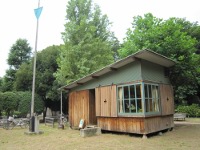 This year, the 100th anniversary of his birth, commemorative events were held at Karuizawa and Bessho-numa in Shinshu, which often visited on the edge of Tatsuo Hori and often set the stage of his poetry. It seems that there was no special event in Chuo-ku, which was a fabric and spent most of his short life. Is he unfamiliar because he did not leave the original Edokko-like part outside or did not make the local area the stage of his work? I feel a little lonely. So, on the day of Koharu weather, in memory of Michizo Tachihara (because it is painful to Shinshu), I walked around the birthplace, the tomb of Tahoin in Hisamatsu small, Taninaka, Bessho Numa Hyatin House, etc. . This year, the 100th anniversary of his birth, commemorative events were held at Karuizawa and Bessho-numa in Shinshu, which often visited on the edge of Tatsuo Hori and often set the stage of his poetry. It seems that there was no special event in Chuo-ku, which was a fabric and spent most of his short life. Is he unfamiliar because he did not leave the original Edokko-like part outside or did not make the local area the stage of his work? I feel a little lonely. So, on the day of Koharu weather, in memory of Michizo Tachihara (because it is painful to Shinshu), I walked around the birthplace, the tomb of Tahoin in Hisamatsu small, Taninaka, Bessho Numa Hyatin House, etc. .
[From the top of the photo]
● Around the current Tachibana-cho birthplace
Many poems and architectural drawings were produced in the attic of a newly built house after the earthquake.
● Hisamatsu Elementary School, "Learn here" monument on the left side of the main gate "Michizo Tachihara Learn here"
● Tomb of the Tachihara family of Taninaka Tahoin
● Fushinkoso (Hiyacinth House) in Besshonuma Park, Minami-ku, Saitama City
[Akira Makibuchi / Sharakusai]
Nov. 26, 2014 14:00
The first part of the autumn Chuo-ku History Walk 2014 "Walking in the Reclaimed Land in the Early Edo Period" was held on November 22 (Sat). This historical walk is a series that explores the origins of Chuo-ku, and is the second installment following the spring "Walking on Edo Maejima". A plan to walk a landfill in the early Edo period, which was formed before the Great Fire of the Meiryaku era (1657), looking at an old map. The first one will be Kyobashi, Hatchobori, and Shinkawa, and the second will be held on November 30, Okawabata, Nakasu and Hamacho (application deadline has been completed). The event is the Chuo-ku Cultural Property Supporters Association of Town Walking Volunteer Guide Group. For more information, click here on the November 1 issue of "News of the Ward">>
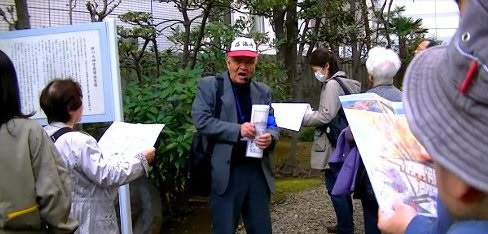
The first day is a calm Koharu weather. Departing in front of Tokyo Square Garden in Kyobashi, passing through the ruins of Kyobashi and Sanjumabori, which were Edo Maejima, and crossing the ruins of Mitsuhashi, you will enter the area reclaimed in the early Edo period. Land was built along Horiwari's Hatchobori (Sakuragawa after the Meiji era). The place adjacent to the Kamejima River is Hatchobori Funairi, which carries goods throughout Edo City. At present, the ruins of Inari Bridge remain.
Crossing Minami Takahashi, Shinkawa. Going out to the Sumida River Terrace, the area where the boat guard station was located was the cutting edge of Edo Minato. During the Meiji period, the water level was measured here, and the standards for altitude were created. Yaesu-dori in front of Chuo-ohashi Bridge has Echizen moat and is also the site of Matsudaira Echizen Moriyashiki. The northern area is the place where Reiganji Temple was founded. After the great fire of the Meiryaku era, Shinkawa was excavated and crowded with sake wholesalers. After passing through Masaru Shinkawa Jingu Shrine (pictured), crossed Reigishi Bridge and broke up in Kayabacho. @ Akira Makibuchi
[Shitamachi Tom]
Nov. 20, 2014 09:00
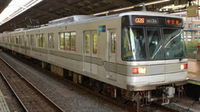 Chuo-ku is a convenient area with a well-developed transportation network. In public transportation, JR, subways, metropolitan buses, community buses, etc. run vertically and horizontally. The familiar thing may be the "Ginza Line" that passes through Ginza and Nihonbashi, but the other thing that you must not forget on the subway line is the "Hibiya Line". There are seven stations in the ward that exceed the Ginza Line, and it is an important route not only for residents but also for many customers. Chuo-ku is a convenient area with a well-developed transportation network. In public transportation, JR, subways, metropolitan buses, community buses, etc. run vertically and horizontally. The familiar thing may be the "Ginza Line" that passes through Ginza and Nihonbashi, but the other thing that you must not forget on the subway line is the "Hibiya Line". There are seven stations in the ward that exceed the Ginza Line, and it is an important route not only for residents but also for many customers.
The Hibiya Line was planned at an early stage to enhance the convenience of transportation in Tokyo, and was built from the beginning on the premise of mutual direct access to private railways. After partially opening in 1961 (Showa 36), construction was rushed in time for the previous Tokyo Olympics, and in 1964 (Showa 39), the entire line was opened. This year marks the 50th anniversary of this year. Indeed, it can be said that it is a railway line that was born and nurtured along with the history of the development of Japan and Tokyo after the war. Among the railway lines, the most presence is the stations in Chuo-ku. It runs frequently in small areas and is also useful as a foot for flow in the area.

For a long time on the Hibiya Line, silver vehicles with a humorous face of the 3000 series have been popular. The cover of the commemorative pamphlet distributed at Tokyo Metro is also displayed. After all, it was the first "semi-stainless vehicle" adopted by the subway at that time. For the first time, ATC (automatic train control device) was installed to improve safety. I think it was a revolutionary famous car, including its design.
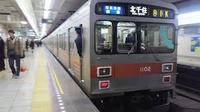 Since then, a vehicle wearing a silver belt called the 03 series is now running. There are also vehicles from the Tobu Railway, which is mutually accessible. Until last year, we had been interacting with the Tokyu Line, so we sometimes saw Tokyu Car Corporation, but it has disappeared and I feel a little lonely. Tokyo Metro and Tobu have announced plans to launch new vehicles in fiscal 2016. It is said that the current 18m8 formations will be unified to 20m7 formations by 2019, and home doors will be developed. More and more interest in the evolving Hibiya Line. Since then, a vehicle wearing a silver belt called the 03 series is now running. There are also vehicles from the Tobu Railway, which is mutually accessible. Until last year, we had been interacting with the Tokyu Line, so we sometimes saw Tokyu Car Corporation, but it has disappeared and I feel a little lonely. Tokyo Metro and Tobu have announced plans to launch new vehicles in fiscal 2016. It is said that the current 18m8 formations will be unified to 20m7 formations by 2019, and home doors will be developed. More and more interest in the evolving Hibiya Line.
The Hibiya Line does not run very deep because the construction method of excavating roads from the ground at that time was adopted. Because of that, there are sharp curves here and there to basically run under the road. The creaking sound as you pass through the curve from the vent on the ground may be heard. Somehow it's a familiar train. Please use the Hibiya Line when working, shopping, or strolling in Chuo-ku. You can visit various towns.
[Dimini ☆ Cricket]
Nov. 19, 2014 09:00
Kachidokibashi, which connects the Tsukiji area of Chuo-ku and the Kachidoki area, is a nationally designated important cultural property.
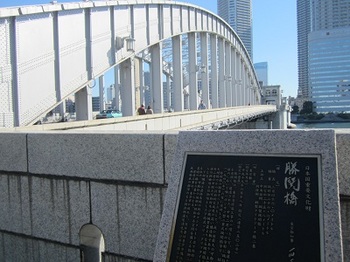
This bridge is a Futaba jumping bridge completed in 1940, and the center of the bridge jumps up, and the substation provided on the Tsukiji side is now the Kachidokibashi Museum. Has become
In front of the museum, there is also a stone monument of "Kachidoki no Ishi". This "handing" was established in 1905, and the name "Kachidoki" is said to be due to the fall of Port Arthur in the Russo-Japanese War.
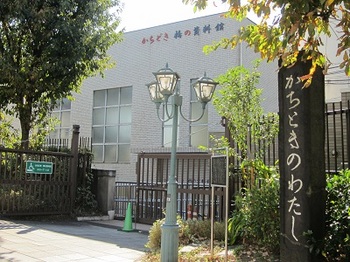
On the wall of the museum, there is a panel of "Kachidokibashi Substation" that gives you a sense of history.
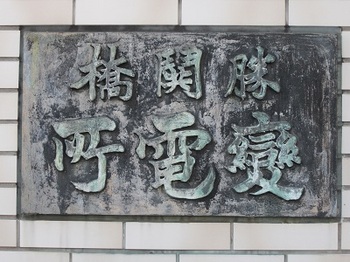
On the first floor of the museum, a generator that operated Kachidokibashi is preserved and displayed as it was at that time.
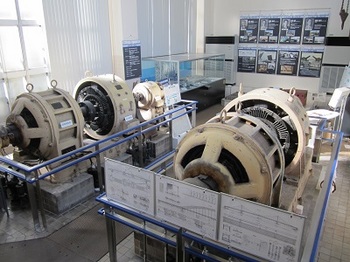
When you go up the stairs, you can see the distribution board of electrical equipment on the second floor.
When I entered the building, I smelled the oil faintly and asked the receptionist, "Do you still put the oil on the machine?" Does the answer "I don't mind" mean the remaining incense at the substations?
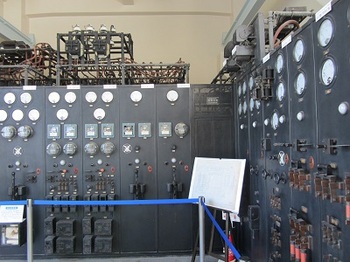
The museum is open from 9:30 to 16:30.
Closed days are days, months and Wednesday, and admission is free.
There is also a tour where you can see the pier.
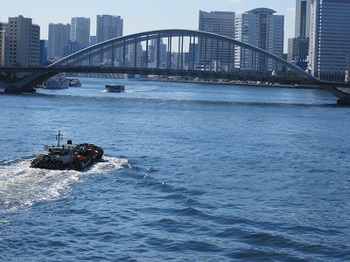
By the way, the photo above  is Tsukiji Ohashi, the newest bridge seen from Kachidokibashi. is Tsukiji Ohashi, the newest bridge seen from Kachidokibashi.
http://www.kensetsu.metro.tokyo.jp/kachidoki/ (http://www.kensetsu.metro.tokyo.jp/index.html)
[Mr.Chuo-ku]
Nov. 6, 2014 09:00
Tokyo Station celebrates its 100th anniversary on December 20 this year, and commemorates the full use of the Yaesu Exit Station Square, which was being developed as a gateway to the Yaesu / Nihonbashi area, will be held from Tokyo Station to Nihonbashi.
During the event, a walking map between Tokyo Station and Nihonbashi and a commemorative replica hard ticket, which is a limited novelty, will be distributed at five locations: Tokyo Station, Daimaru Tokyo Store, Nihonbashi Takashimaya, Nihonbashi Mitsukoshi Main Store, and Nihonbashi Information Center (Cored Muromachi).
Commemorative replica hard ticket (image)

The walking map contains the Edo, Taisho and current maps of Tokyo Station, Yaesu and Nihonbashi areas, as well as long-established stores and historical attractions, and it seems that participants can enjoy a stroll as if they were traveling in history.
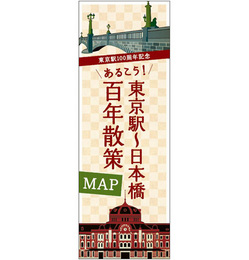
Period October 11 (Sat)-December 20, 2014 (Sat)
Location: JR East Tokyo Station, Daimaru Tokyo Store, Nihonbashi Takashimaya, Nihonbashi Mitsukoshi Main Store, Nihonbashi Information Center (Cored Muromachi)
|
Links
|
 On November 28th, Koami Shrine "Doburoku Festival".
On November 28th, Koami Shrine "Doburoku Festival".


















